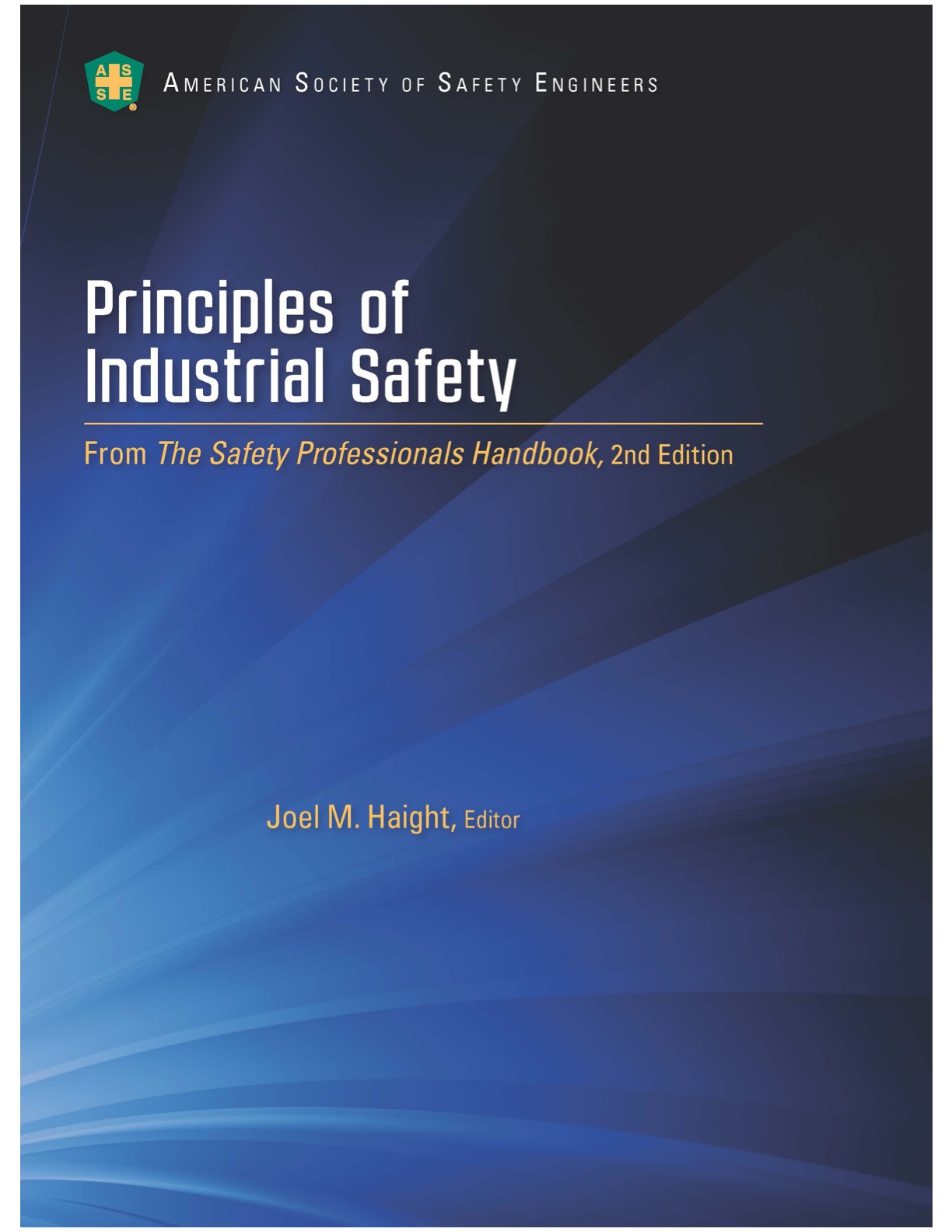The focus of this text is on industrial safety principles from a management perspective. The book begins with a chapter summarizing of some of the regulations and voluntary and consensus standards associated with managing safety engineering work. It also discusses executive orders and how the federal agencies may be influenced or affected by them; what Code of Federal Register (CFR) applies to which agency; and what voluntary programs can be adopted by workplaces to take proactive approach towards the environmental and occupational safety and health issues. The somewhat misunderstood method by which federal agencies, through a process called “incorporation by reference” is explained, as is the practice by authorities having jurisdiction (AHJ) of making voluntary consensus standards mandatory by adoption.
In the chapter which follows, “General Safety Management,” Jeff Camplin begins by discussing the definition of an effective safety and health management system. Ownership of a company?s safety management system by senior management is an outgrowth of recognizing the critical link between safety and productivity and profitability. project would require. The third chapter, “Managing a Safety Engineering Project” begins with some foundation information about safety engineering and moves into the development of a project plan in terms of work and task breakdown and allocation. Two of the main concerns of any project manager are the project?s schedule and the project?s budget. This chapter addresses both, and it includes solid, real-life examples of each. For scheduling the author addresses two frequently used techniques in relatively significant depth. Techniques such as Gantt charting and Project Evaluation and Review Technique (PERT) charting are presented, each with an in-depth example. To address budgeting, the chapter includes basic engineering economics and decision-making where an example of a net present value (NPV) determination is made for a real-life example decision between upgrading an existing facility vs. building a new facility. General budgeting through identifying and organizing required tasks, as well as methods for cost tracking are presented, again with detailed examples. The reader will be able to find coverage of concepts and information that support project management, such as team building, leadership, people development, human resource allocation using efficiency models, conflict resolution, learning curves, work sampling and its associated uncertainty calculations, performance ratings and time study, etc.
With ever-increasing globalization, safety and health professionals who seek to understand the business environment in which they operate are better able to anticipate changes that will impact workplace safety and health within their own organizations in the U.S. and around the world. This is essence of Chapter 4, “Global Issues.” Developing your “global fluency” and strategic business perspective, in addition to your SH&E management systems and technical safety and health skills, are keys to your success in the safety and health profession. While environmental management is not within the scope of this chapter, the principles of managing environmental impacts are aligned with those of safety and health management outlined in this chapter.
The last three chapters focus specifically on management issues. Chapter 5, “Cost Analysis and Budgeting,” provides the reader with tools that can objectively evaluate whether a project should be pursued. While the tools are often referred to as associated with engineering economics, they are really financial analysis tools that are applied every day to projects having nothing to do with either engineering or safety. The next chapter, “Benchmarking and Performance Criteria,” is written based on Dr. Christopher Janicak”s belief that “Safety performance should be evaluated in an organization in the same manner as productivity and other aspects of business.” The author emphasizes the importance of a structural approach to key performance improvement measures: planning, establishing goals and objectives, identifying valid measures, conducting proper data analysis, and implementing appropriate follow-up measures. Valid measures are true indicators of performance. Likewise, corrective actions are also valid means for improving performance. Leading, trailing, and current measurement indicators are discussed. Critical aspects of benchmarking a company?s safety performance is discussed next, followed by a discussion of how quality control techniques can be applied to improving safety and health programs.
Best practices in managing safety engineering work, the subject of the final chapter. The purpose of this chapter is not to identify the best safety engineering methodology, or to imply that a management structure is the key to identifying and eliminating all hazards within a system. It is written from the perspective that the best safety engineering techniques are those that are most suited to identifying hazards. The best practice in managing safety engineering work is to employ a risk management system that promotes a positive safety culture.
Principles of Industrial Safety 1st Edition by Joel M. Haight; Jeffery C. Camplin; Chritopher A. Janicak; Anjan K. Majumder; Linda S. Rowley; Kathy and Publisher ASSE. Save up to 80% by choosing the eTextbook option for ISBN: 9781885581860, 1885581866. The print version of this textbook is ISBN: 9781885581754, 1885581750.











